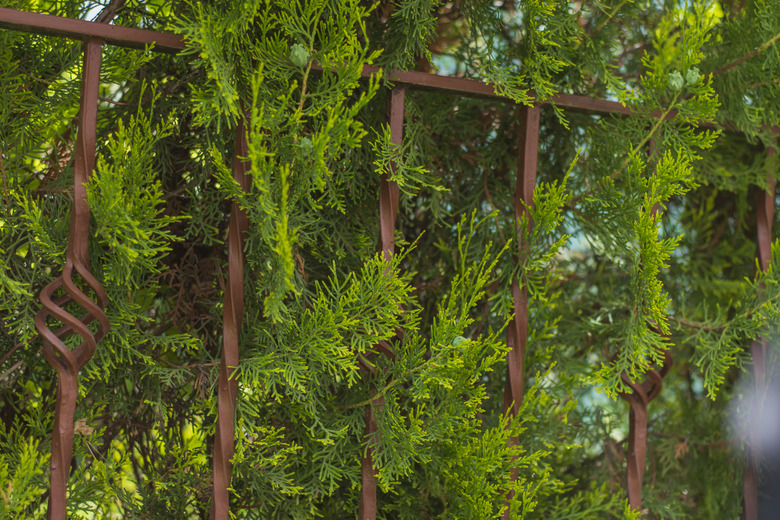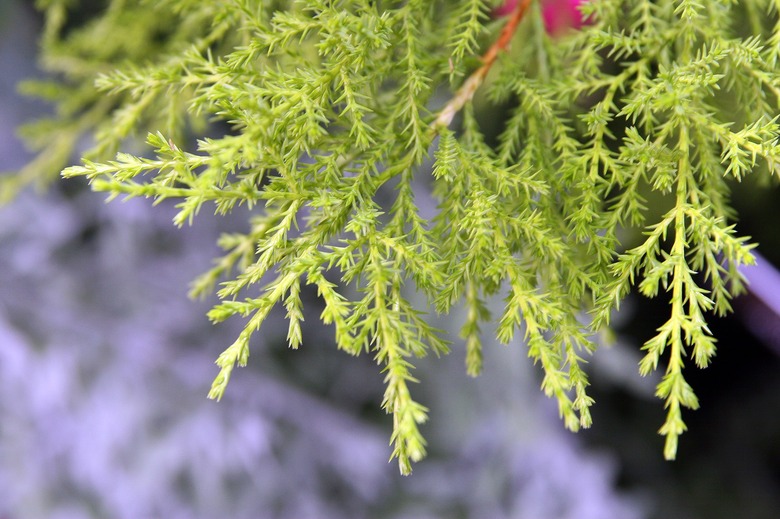Care Of A Lemon Cypress Tree
Lemon Cypress Trees Are Just Cultivars of Monterey Cypress Trees
The moniker "lemon cypress" refers to two cultivars of the Monterey cypress (Hesperocyparis macrocarpa) that have striking bright yellow foliage.
The Monterey cypress, which is endemic to California, is a conifer with needlelike leaves. The lemon cypress cultivars produce a scent reminiscent of lemon when they are crushed, hence the name.
Lemon cypress trees can be grown in containers or planted in the ground in U.S. Department of Agriculture plant hardiness zones 7 to 10, where they are winter hardy. They are considered low-maintenance trees.
Types of Lemon Cypress Trees
Goldcrest (Hesperocyparis macrocarpa 'Goldcrest') is one of two columnar Monterey cypress cultivars with chartreuse-colored foliage that are often referred to in horticulture as lemon cypress trees. According to the American Conifer Society, the Goldcrest Monterey cypress adds about 10 inches a year and can reach a height of 7 feet in 10 years, though it can grow taller. The species can be planted as a specimen or pruned into a hedge.
The other Monterey cypress cultivar known as lemon cypress is called Goldcrest Wilma or just Wilma (Hesperocyparis macrocarpa 'Goldcrest Wilma'). It is a dwarf lemon cypress that attains a height of about 5 feet in 10 years. It originated from a mutation in the Goldcrest cultivar. The Wilma cultivar grows a lot slower than Goldcrest and has a noticeably tighter branch structure.
Lemon Cypress Indoor Care
Both lemon cypress cultivars are compact enough that they can be grown in containers when they are young. In fact, lemon cypress trees are widely sold to be given as gifts during the holiday season and can be used as alternative Christmas trees.
The Mississippi State University Extension says that when you are watering a lemon cypress in a container, your goal is to keep the soil evenly moist but not waterlogged. It is important for the soil not to dry out completely.
Indoor lemon cypress trees should be situated where they will receive five to six hours of sunlight a day.
Lemon Cypress Outdoor Care
Where they are winter hardy, lemon cypress trees can be kept outdoors in a container or planted into the ground. This is the best way to preserve a lemon cypress for many years.
Soil Needs
The North Carolina Cooperative Extension notes that lemon cypress trees tolerate soils with a variety of pH levels as long as they have good drainage. In fact, these trees do very well in sandy soils through which water moves quickly. Established trees can handle dry conditions.
Location
It is important to plant lemon cypress trees where they receive plenty of sun. You also want to choose a location where the trees will be protected from frigid winter winds.
Pruning and Fertilizing
One of the reasons lemon cypress trees are easy to care for is that they rarely need to be pruned unless you are using them as a hedge. According to the North Carolina Cooperative Extension, spring is the best time to prune lemon cypress trees.
Like most conifers, lemon cypress trees do not need fertilizer—unless you notice that the tree's foliage is not the color it should be or the leaves are not growing as long as expected.
References
- North Carolina State Extension: Hesperocyparis macrocarpa 'Goldcrest'
- North Carolina State Extension: Hesperocyparis macrocarpa 'Goldcrest Wilma'
- American Conifer Society: Cupressus macrocarpa 'Goldcrest' / Goldcrest Monterey Cypress
- Mississippi State University Extension: Holiday Houseplants
- American Conifer Society: Cupressus macrocarpa 'Wilma' / Wilma Monterey Cypress
- Royal Horticultural Society: Cupressus macrocarpa 'Goldcrest'
- JCC Williamsburg Master Gardeners: Tips for Growing Holiday Plants
- University of Washington Botanic Gardens: Best Procedures for Preparing Planting Holes

